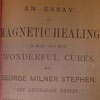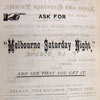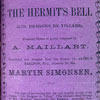Cabinet 05
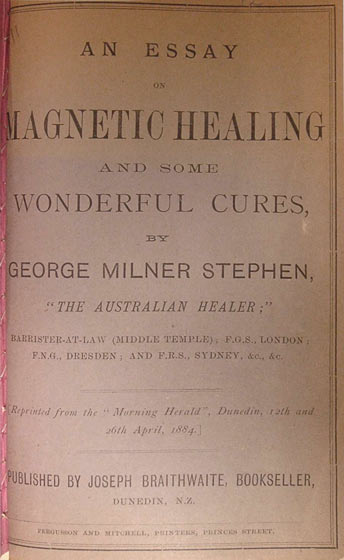
George Milner Stephen (1812-1894) turned to faith healing after a controversial career as a public servant and barrister in Australia, mainly Adelaide. ‘The Australian Healer’ (as he was known) was reputed to have lengthened short limbs, cured deafness, rheumatism, St Vitus dance and consumption – even from a distance! Miracle cures and satisfaction guaranteed puffs this pamphlet, with his use of feedback from scores of happy clients to further promote his wares. One begins: ‘Total Blindness. Instantly Cured!’ As a pamphlet, this is a supreme example: the eye-catching mix of type, its quack contents, and popular enough for Braithwaite, a Dunedin printer, to undertake printing copies for an eager populace.
George Milner Stephen, An Essay on Magnetic Healing and Some Wonderful Cures. Dunedin: Joseph Braithwaite, [1884]. Vol. 80, no. 12. Chapman Pamphlet Collection. Hocken Library.
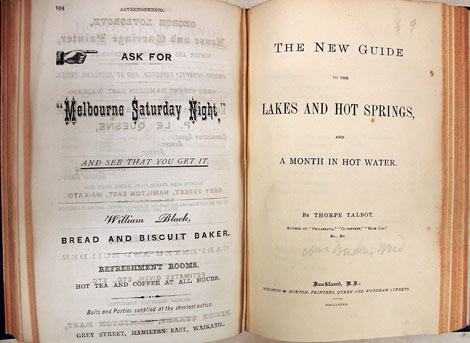
Thorpe Talbot (Frances Ellen Talbot, c.1851-1923) was a one-time resident in Dunedin and as revealed on the title-page of this tourist guide to Robert Graham’s ‘Waiwera’, the author of Philiberta (1883; set in Victoria and Auckland), Guinevere, and Blue Cap. The inscription ‘Mrs Dudley Ward’ on Chapman’s copy of her ‘racy’ (as it was once described) guide refers to the fact that she later married Charles Dudley Ward, a district judge in Dunedin. As part of the legal fraternity, Chapman may have received his copy from Ward, or perhaps from Talbot herself. Note the delightful advertisements opposite.
Thorpe Talbot, The New Guide to the Lakes and Hot Springs and a Month in Hot Water. Auckland: Wilson & Horton, 1882. Vol. 21, no. 9. Chapman Pamphlet Collection. Hocken Library.
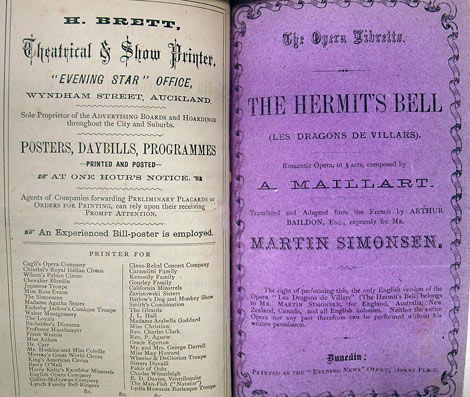
The first performance of Louis Aimé Maillart’s comic opera Les Dragons de Villars (also known as Das Glöckchen des Eremiten) occurred in Paris at the Théâtre-Lyrique on 19 September 1856. In between invading soldiers, women hiding in caves, a brave goat-herdess (Rose) and the inevitable love triangle, there is a bell that hangs high in a hermitage in the Upper Savoy (where the action is set) that according to legend rings when a woman of the village is unfaithful to her husband. As a translation, The Hermit’s Bell was an exceedingly popular work that played to packed houses up and down the country. It first played at the Queen’s Theatre in Dunedin on 7 April 1876; perhaps it was then that Chapman picked up this copy?
Louis Aimé Maillart, The Hermit’s Bell. Dunedin: ‘Evening News’ Office, [1888]. Vol. 94, no. 3. Chapman Pamphlet Collection. Hocken Library.

